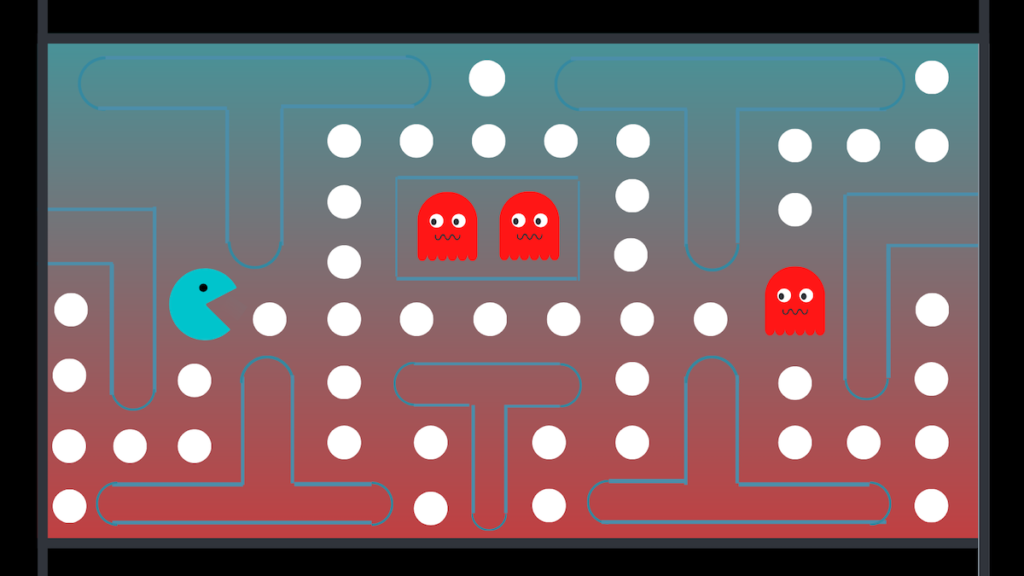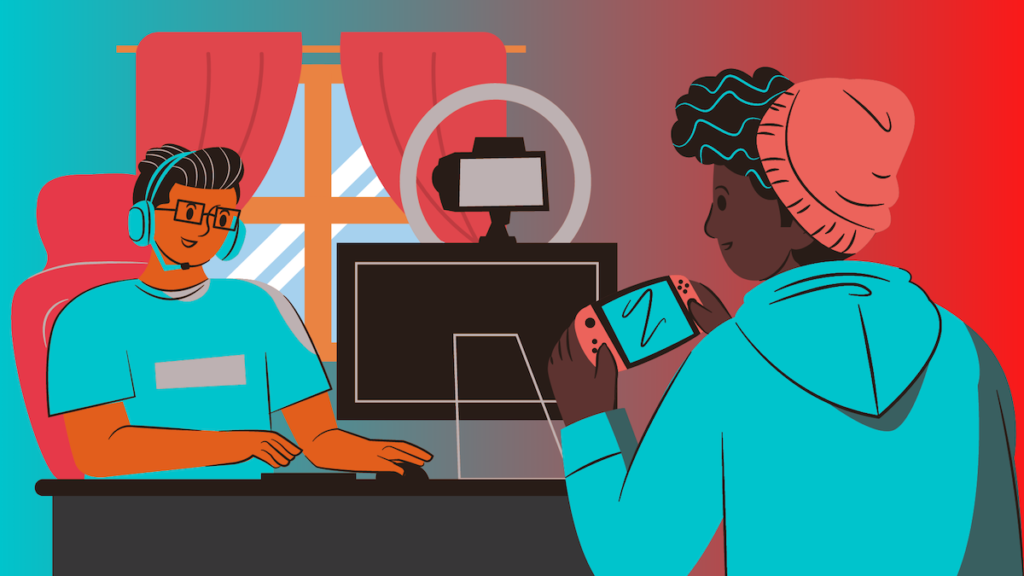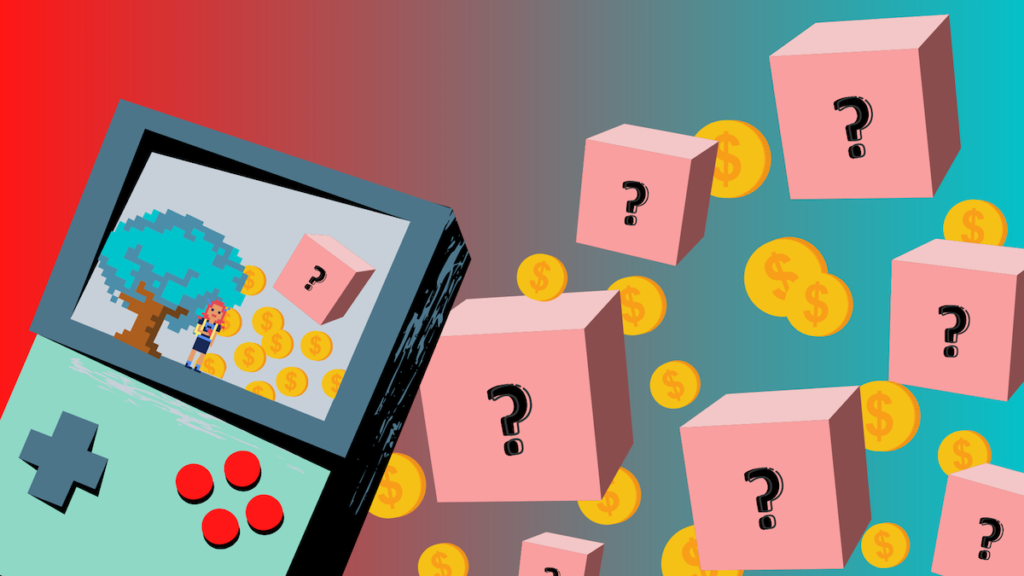Life has become virtual due to the pandemic. Classes, parties, family visits, psychiatric appointments, you name it—it’s probably online now.
With what can be done in-person limited due to COVID-19, more attention has been brought to virtual pastimes such as video games.
Years ago, the term ‘gamer’ carried negative connotations. People assumed everyone who played video games was young and lazy—wasting their time gaming instead of doing something productive.
Many of the concerns around video games pertain to the amount of screen time gamers (in particular, youth) spend using this medium, the violence sometimes depicted during gameplay and a worry that the games might be addictive.
As this medium has steadily become more mainstream, public opinion on video games has begun to change.
With the pandemic already forcing everyone to their devices, video gaming is now being relied upon more than ever to foster social connection.

Video games as pandemic tools
Aubrey Anable, a Carleton University associate professor of film studies, examines how video games affect human emotions. She said the category of video games is a diverse one, as they have varying uses and benefits.
Early on in the pandemic, video games started to be used as a way of socializing, but Anable said that is not their only benefit. They can also be used as a form of reflection in scary times.
“For example, I played The Last of Us very early on during lockdown,” Anable said. “I finally wanted to play something that weirdly reflected my biggest fears about what we may be facing.”
Video games are also used as a distraction, Anable said. Sometimes people choose to play mindless games to zone out of everyday life and stresses.
Beyond reflection and distraction, some video games are designed for wellness. Anable explained the game Shadows Edge includes a series of prompts for breathing exercises and self-care activities which can improve wellness.
“Shadows Edge was designed initially as a game addressed to youth who were struggling with chronic illness, and it’s been reframed in the COVID-19 era as a game for anybody who experiences anxiety,” Anable said.
Dante Provenzano, a self-proclaimed lifelong gamer and Carleton bachelor of information technology student, is the co-president of Tespa Carleton—the university’s first-ever esports team.
Provenzano said he initially joined the team as a way to make friends when he was a freshman at Carleton. Now in his fourth year of study, he said video games—what many consider to be an isolating medium—are actually a useful tool for meeting people.
“I’ve had friends all over the world, it’s a way to interact in a different way than you would in normal life,” Provenzano said.
Braden Gunther, a fourth-year mechanical engineering student and president of Game Design Carleton, said video games have allowed him to socialize with family members during the pandemic.
“I can keep in touch with my brother,” Gunther said. “I can talk to him in a less formal way than a Skype call.”

Super smashing stereotypes
In support of how the pandemic is changing public perception around video games, Gunther referenced how the World Health Organization (WHO) changed its public narrative on video games in recent months.
In 2018, WHO classified ‘gaming disorders’ as addictive behaviours.
During the pandemic, WHO started a Twitter hashtag campaign called #PlayApartTogether, advocating for youth to socialize by playing video games, rather than interacting in person, to lower the chance of spreading COVID-19.
While gaming has certainly had a bad reputation in the past, Provenzano said he feels increased positive media representation is starting to shift the narrative.
“They’re starting to understand it’s not just guys sitting around in their basements, it’s people travelling around the world, making friends,” he said. “There’s lots of people making their entire livelihoods out of it.”
Some critics of video games who worry about excessive screen time may loosen as many industries shift online due to COVID-19, and kids can no longer socialize as much in-person.
In the past, Anable said video games had an air of exclusivity to them, particularly in terms of gender as gaming is traditionally thought to be a male-dominated area. She added she believes access is shifting.
“There is truth to the stereotype that gaming culture … can be an exclusive space, that there is a boundary marking that goes on and often that marking happens along gender lines,” she said. “But, I think that’s changing a lot.”
As so many more people use video games, Anable said the distinct label of ‘gamer’ is blurring and becoming more mainstream. She explained video games can also serve as opportunities to participate in creative spaces.
“Video games are no longer simply—or they never were—simply hyper-violent shooting games,” Anable said. “We’re talking about a wide variety of media.”

Carleton’s gaming community
Provenzano said Tespa Carleton has been lucky to operate relatively normally during the pandemic, albeit with no in-person events.
Gunther said his club has also been able to run virtually amid COVID-19, but there are some drawbacks.
The Game Design Carleton club develops several games at once, with members splitting off into smaller groups—each choosing to work on a particular project that they find the most gripping.
While the club’s members design video games, he explained they have a varying range of experiences in actually playing them. Some are avid gamers, while others have never played before in their lives.
Club members mainly communicate via Discord, which results in some mishaps as members live in different time zones.
He added not being able to host in-person meetings has been challenging.
“I kind of miss the in-person stuff,” Gunther said. “I miss seeing their faces.”
Gunther said the pandemic has also had negative effects on member recruitment. Less new members have joined this year, but more have stayed on than in years’ past.

The future of virtual game design
Gunther said he believes the game design industry is conducive to working remotely because it is a virtual medium.
He referenced that some amateur game designers currently looking for opportunities to collaborate remotely on projects are communicating with one another via a subreddit called I Need a Team (INAT).
David Thue, a Carleton assistant professor who teaches game design, said he is encouraging his students to work creatively during the pandemic.
Thue said he posed the notion that technology can be developed to help society adapt during COVID-19 to the game development teams in his class, having them each design a non-local multiplayer game.
The games will show each of the players a different screen, and they have to communicate via phone or another form of voice chat while playing to explain the different things they are seeing.
“It felt timely, in a sense, given the fact that playing games with other people gives a lot of value,” he said. “For me, the best way to do that is couch co-op games like Smash Brothers where you sit beside people, but you can’t do that super easily anymore, so I was trying to think of how you could still enable this kind of experience.”
When it comes to video games being made for users to play during the pandemic, Thue said the concept is tricky. For bigger companies, it can take anywhere from three to five years to develop a game, whereas he said smaller companies have more flexibility.
Thue’s students will only have until the end of the semester, Dec. 11, to design their games. Once developed, Thue said the games will be featured in an open house on both Itch.io and Discord—welcome for all users to play.
Although video gaming hasn’t always been the most inclusive space, Thue said in an email interview that it has been slowly improving over time.
“As a culture, I think we’ll have succeeded at promoting inclusion in gaming when everyone with an interest in playing games or studying game creation feels perfectly welcome to do so,” Thue said.
Featured graphic by Jillian Piper.





